The evergreen epiphyte cymbidium (Cymbidium) is part of the Orchid family. Such plants can be found in the subtropics of Northern Australia and Asia, and some species are found at an altitude of up to 2 thousand meters above sea level.
The cultivation of such an epiphyte began more than two thousand years ago in China. Cymbidiums were considered by Confucius to be the kings of fragrances. Today in Japan and China, natural species of this plant are cultivated very widely, among them there are forms of foliage and flowers of which are painted in different color shades. Small species are most popular with flower growers, because their flowers have the strongest aroma of all cymbidiums. Large-flowered hybrids are highly prized in Australia and Europe as cut crops. In total, more than 100 species of such a plant are cultivated today. Peter Olof Swartz, was a Swedish botanist, and it was he who first described cymbidium in 1799.
Content
- 1 Brief description of cultivation
- 2 Features of the cymbidium
- 3 Caring for the cymbidium orchid at home
- 4 Possible problems
- 5 Types and varieties of cymbidium with photos and names
- 5.1 Cymbidium eburneum
- 5.2 Aloe leaf cymbidium (Cymbidium aloifolium)
- 5.3 Cymbidium lanceolate (Cymbidium lancifolium)
- 5.4 Cymbidium dayanum
- 5.5 Cymbidium tracyanum
- 5.6 Cymbidium lowianum
- 5.7 Sword cymbidium (Cymbidium ensifolium)
- 5.8 Cymbidium insigne
- 5.9 Cymbidium dwarf (Cymbidium pumilum)
- 5.10 Giant cymbidium (Cymbidium giganteum)
Brief description of cultivation
- Bloom... Typically 4-6 weeks in winter.
- Illumination... This plant needs a long day of light, while the light should be diffused, but bright. In winter, the bush needs artificial lighting.
- Temperature regime... In the warm season, the temperature should be room temperature, and shortly before the beginning and during the flowering period - no more than 16 degrees.
- Watering... During the growing season, they are often watered with plenty of water, and before flowering - 2 times a month.
- Air humidity... It should be at the level of 50-60 percent. To increase humidity in the summer, it is recommended to moisten the foliage from a spray bottle three times a day, and place the pot with the plant on a tray filled with damp pebbles.
- Fertilizer... Regularly after every third watering, the bush is fed with a fertilizer solution for orchids.
- Dormant period... Not pronounced.
- Transfer... Regularly once every 2 or 3 years.
- Reproduction... By dividing the bush.
- Pests... Scabbards, spider mites and aphids.
- Diseases... Sooty fungus, gray and brown rot, and also a viral mosaic.
Features of the cymbidium
The cymbidium orchid has ovoid pseudobulbs, which are a thickening of the lower part of the stem, it is in it that the plant stores water. Keel-like and leathery to the touch, leaf plates can be linear or xiphoid, pointed or obtuse. The height of the peduncle can be up to 150 cm. A loose hanging racemose inflorescence can be multi- or few-flowered. The size of the flowers depends on the species and variety, they are both large and small. They are painted in a variety of colors: yellow, pink, cream, greenish-yellow, brown, red and their various shades. As a rule, sepals and petals are painted in the same color and have the same shape: lanceolate or crescent. The three-lobed sessile lip often has a rich variegated color. The flowering period is 6 to 12 weeks. When grown indoors, the bush can live for 3-7 years. Most types of cymbidium are represented by epiphytes, which means they need special care.
Caring for the cymbidium orchid at home
Illumination
If possible, it is recommended to place the cymbidium on the sill of a large window, where there is a lot of light. Do not forget to shade it from the midday sun, especially during the flowering period, for this you can use a light curtain. This plant is distinguished by its light-requiring. As a rule, such an orchid blooms in winter, so at this time it will need compulsory supplementary lighting, which will help to extend the daylight hours.
Temperature regime
The orchid feels better in the cool, but stuffiness and heat can harm it. The same applies to the winter months, if the bush is located near heating devices, this will have an extremely negative effect on its flowering.
Air humidity
The flower needs high humidity - from 50 to 60 percent. In this regard, in the summer, the bush will need to be moistened from a sprayer at least 3 times a day. In order to increase the humidity of the air, the pot with the bush can be placed on a deep pallet filled with wet expanded clay or pebbles.
Watering
During the growing season, watering should be frequent and abundant, but make sure that there is no stagnation of moisture in the root system, as this can cause rot on the roots or the formation of black specks on the surface of the leaf plates. With a lack of moisture, pseudobulbs wrinkle, and sometimes buds and flowers fly around.
In late autumn, the amount and abundance of watering is reduced. If the room is cool, then the bush is watered twice a month, and if it is warm, then the frequency of watering is increased.
Fertilizer
The plant is fed regularly with every third watering. At the same time, it is necessary to add a nutrient solution to the substrate only after the bush is watered. For feeding, experts advise using a special fertilizer for orchids, for example: Ideal, Kemira Lux or Rainbow. Remember that fertilizer must be taken to feed the orchid in half the dose recommended by the manufacturer. In the middle of the summer period, the amount of potassium in fertilizers should be increased, and nitrogen should be reduced. During flowering, the bush is not fed.
Cymbidium transplant
The cymbidium is transplanted only if necessary, when its root system becomes very cramped in the container. On average, transplants are carried out 1 time in 2 or 3 years. A faded bush should be transplanted when the height of its young growth is at least 50 mm.
Before proceeding with the transplant, a suitable substrate is first prepared. If desired, you can purchase a ready-made potting soil mixture for orchids in a specialized store.However, you can do it yourself, for this, the bark of a pine tree is taken as a basis, crushed sphagnum, a small amount of charcoal and rotted horse manure are poured into it, and fern roots are added, mix all the components thoroughly. At the bottom of the pot, pour a thick layer of drainage from clay shards or expanded clay, it is covered with a two to three centimeter layer of the prepared substrate. After that, an orchid is placed in a new pot, taken together with a lump of earth. Next, fill all the voids with fresh substrate so that the pseudobulb is on the surface of the soil mixture. If, when transplanting a bush, you had to remove rotten root areas, then water it only a couple of days after the completion of the procedure. If the roots of the orchid were healthy, then it is watered immediately upon completion of the transplant. The transplanted bush is placed in a shaded place, where it will stay until it recovers from stress.


Watch this video on YouTube
What if the cymbidium does not bloom?
The time and duration of flowering of different varieties and species differ from each other. However, any of these varieties of cymbidium will not bloom or it will be difficult to tie buds if the room is warmer than 22 degrees. This is due to the fact that species from mountainous regions are mainly used to create modern hybrids, therefore, creating conditions for them to grow and bloom, this should be taken into account. Try to keep the conditions close to natural in the room where the flower is located: it will need a large amount of bright light and a difference between night and day temperatures of 4-5 degrees. Species and varieties blooming in spring or summer, when grown in a garden or on a balcony, are exposed to quite natural daily temperature changes, and therefore they will delight the grower with their lush flowering, while not causing unnecessary trouble. Remember that such a flower is not afraid of nighttime cold snaps up to 5 degrees. And if the bush blooms in winter, then the grower will definitely have to do something, because because of the working heating devices, there will be no natural drop in daily temperatures. For example, if you have an insulated balcony or loggia, then the bush can be moved there at night. The plant blooms most magnificently in the third year of growth, while the largest flowers are formed in it.
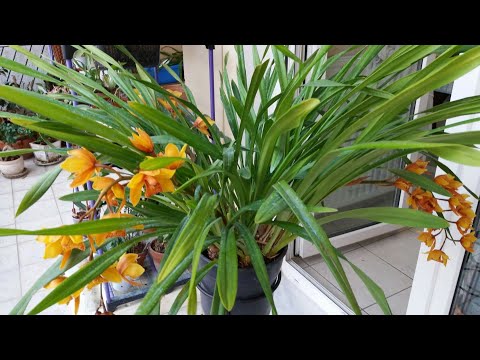

Watch this video on YouTube
Reproduction of cymbidium
This orchid can be propagated only by dividing the bush. This procedure is carried out simultaneously with the transplant. After the bush is removed from the container, you will see a tangled ball consisting of roots, and the lower part of them is gray and withered. Take a well-sterilized, very sharp instrument and cut off the bottom of this ball of dried roots. Then carefully divide the bush into parts, and each of the divisions should have several roots and at least one juicy pseudobulb. Sprinkle the cut sites with coal powder, and then the cuttings are planted in individual pots using a suitable substrate for this (see above). Until the bush starts growing, it needs high air humidity, which is provided by regular watering and spraying. You can understand that the delenki have taken root by the appearance of new shoots and leaf plates.
Possible problems
Cymbidium does not bloom
Sometimes it happens that the cymbidium is lush with dense green foliage, but it is not going to bloom. In this case, he will need a good shake, for this they reduce the abundance and frequency of watering, and also organize a drop in daily temperatures of 4-5 degrees. To make such an orchid bloom, the air temperature at night should be between 10 and 13 degrees.
The foliage dries
If you notice that the tips of the leaf plates are drying out, then this is due to the fact that the air in the room is too dry.In this case, increase the frequency of moistening the bush from the spray bottle (at least 3 times a day), and place the container with the plant on a deep tray filled with wet pebbles. However, in some cases, the tops of the leaf plates dry out due to excessively abundant or frequent watering, remember that the surface of the soil mixture should dry out well between waterings.
Cymbidium turns yellow
In some cases, the cymbidium begins to turn yellow due to the fact that rot appears on its roots. Be sure to inspect the root system, after removing the top layer of the substrate. If rot is found, then you need to transplant the bush into a fresh substrate as soon as possible, while be sure to remove all rotten areas from it. If the roots have rotted very badly, then the orchid cannot be saved. After transplanting, try to understand why root rot has appeared, since if the cause is not eliminated, then problems with the plant may reappear.
Pests and diseases
Aphids, spider mites and scale insects can settle on the cymbidium, and it can get sick with mosaics, gray and brown rot, as well as a sooty fungus. If a mosaic is damaged, the bush will have to be burned, since this viral disease is currently incurable. And if damaged by rot, you will need to cut out all the diseased parts of the flower, also reduce watering, and the bush is transferred to a room with a higher air temperature.
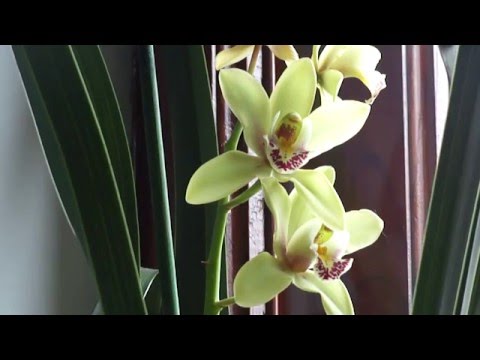

Watch this video on YouTube
Types and varieties of cymbidium with photos and names
Below will be described those types and varieties of cymbidium that are most popular with flower growers.
Cymbidium eburneum
Or "ivory". In this species, flowers of a spectacular cream color consist of large petals. They have the same scent as lilacs. The bush blooms in spring, and it grows best at moderate temperatures.
Aloe leaf cymbidium (Cymbidium aloifolium)
The height of such a miniature plant is about 0.3 meters. Spectacular yellowish flowers with a cream and burgundy tint in diameter reach 45 mm.
Cymbidium lanceolate (Cymbidium lancifolium)
In diameter, the flowers reach about 50 mm, their petals and sepals are greenish with a dark red median vein. The greenish-white lip has red spots and specks on the middle lobe, and brownish-red stripes are located on the lateral lobes. Flowering occurs in April – October.
Cymbidium dayanum
The multi-flowered inflorescence contains flowers up to 50 mm in diameter. The ivory petals and sepals have a dark red median vein. The front lobe of the lip is white, strongly curled, the callus is white or cream. The homeland of such a plant is Sumatra and the Philippines. Flowering is observed in August – December. The most popular varieties are "Tavoy" and "Twelv".
Cymbidium tracyanum
This multi-flowered species is distinguished by very large and fragrant flowers, which reach 15 cm in diameter, they are painted greenish-yellow, and are decorated with brownish-red dotted lines along the veins. Wavy (may be fringed) along the edge of the lip of a cream shade with specks and stripes of red along the anterior lobe. The length of the racemose inflorescence is about 1.2 m, and it contains about 20 flowers. Bloom is observed in September – January.
Cymbidium lowianum
In this epiphytic plant, the flowers are about 20 cm in diameter, they are part of the multi-colored inflorescence. The color of the petals and sepals is yellow-green, the dark-crimson three-lobed lip has a yellow border on the edge of the central lobe. The height of the bush can reach almost 1 m. The length of the linear leaf plates is about 0.75 mm. This species comes from Burma. Flowering is observed from February to June. The Lilliput variety is the most popular among florists.
Sword cymbidium (Cymbidium ensifolium)
Such a terrestrial orchid naturally occurs in rocky areas. The veins of the yellowish petals are claret, and they have the same shade of specks at the base. On a yellowish or light green lip, the lateral lobes are decorated with brown lines, and the middle one is speckled with a dark red hue. The erect peduncle, which is 15–65 centimeters in height, bears an inflorescence of 3–9 very fragrant flowers, reaching 30–50 mm in diameter. Bloom is observed in January – April. Flower growers cultivate hybrids of c. swordsman Golden Elf, Peter Pan, Lovely Melody.
Cymbidium insigne
The spectacular flowers of this epiphytic plant consist of pinkish or white petals, decorated with specks of red. All lobes of the lip have purple specks; the front lobe has a wavy edge bent back. The loose vertical inflorescence, approximately 0.8 m long, contains from 9 to 15 flowers, reaching 70–80 mm in diameter. Originally species from China, Thailand and Vietnam. Flowering is observed from February to May.
Cymbidium dwarf (Cymbidium pumilum)
Typically, flowers consist of brownish-red petals with pale yellow edging around the edge. The white lip is decorated with dark red spots, the middle lobe is curved and obtuse. The practically erect inflorescence is about 12 centimeters long, with an average flower diameter of about 10 centimeters. This very rare species comes from China and Japan. Blooming occurs in December – March.
Giant cymbidium (Cymbidium giganteum)
The inflorescence contains about 15 very fragrant flowers in diameter reaching from 10 to 12 centimeters. Their petals are greenish-yellow, decorated with red lines. On the surface of the creamy lip there are also stripes and specks. An inflorescence hangs from a powerful peduncle, reaching about 0.6 m in length. The species comes from the Himalayas. Flowering occurs in November – April, with each flower withering only 20–30 days after opening. The "Red Chile" variety is popular: a compact bush decorated with deep red flowers.
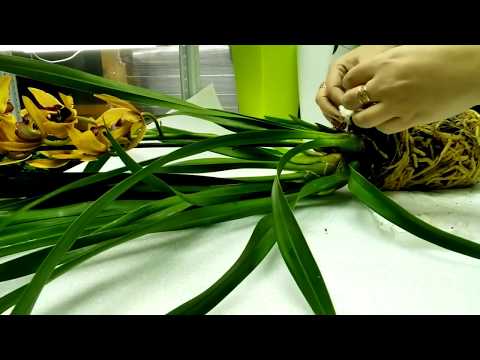

Watch this video on YouTube

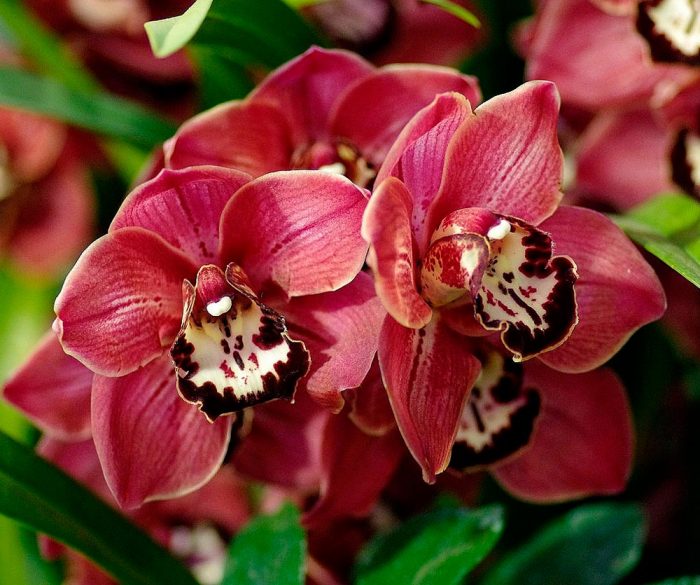
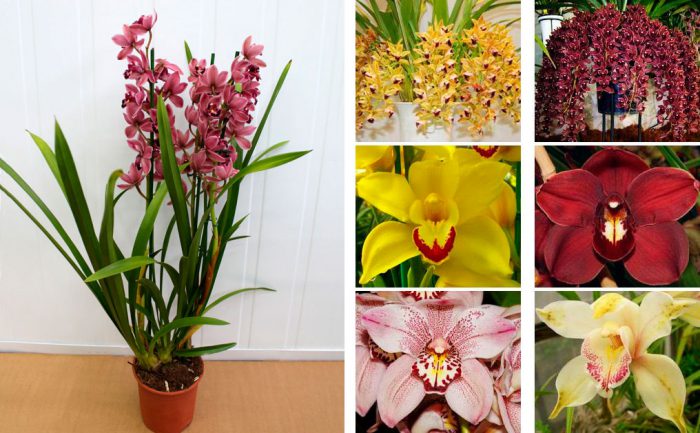
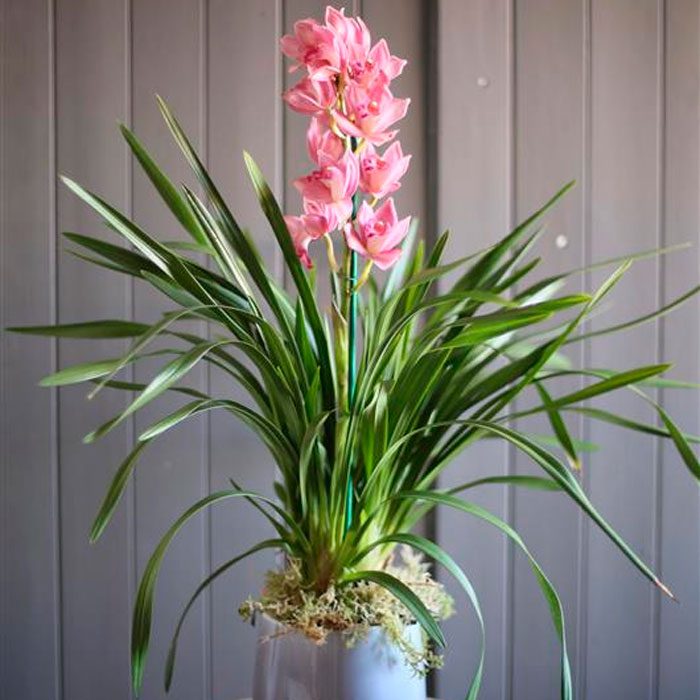
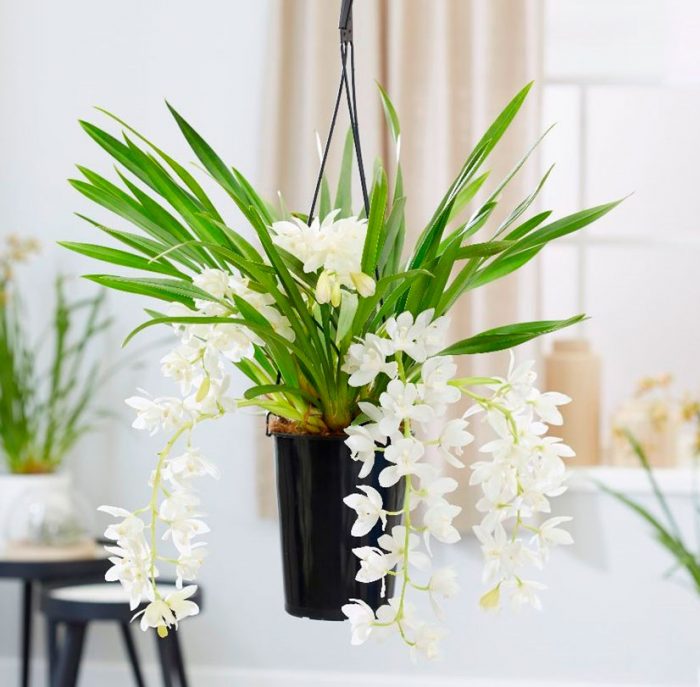
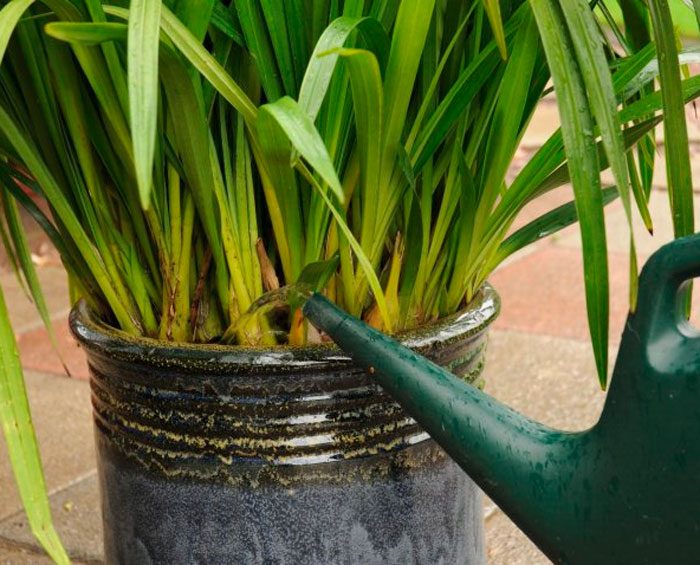
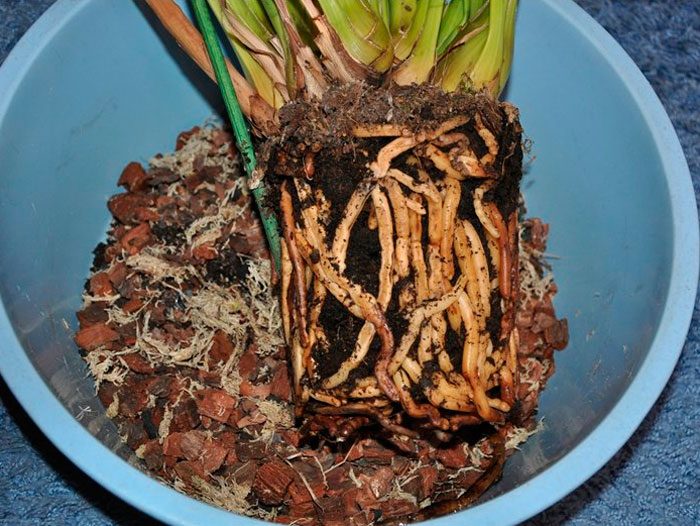

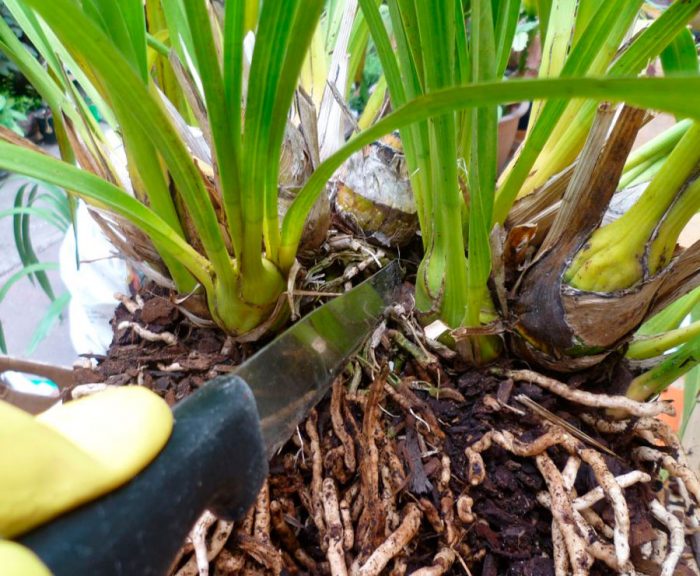
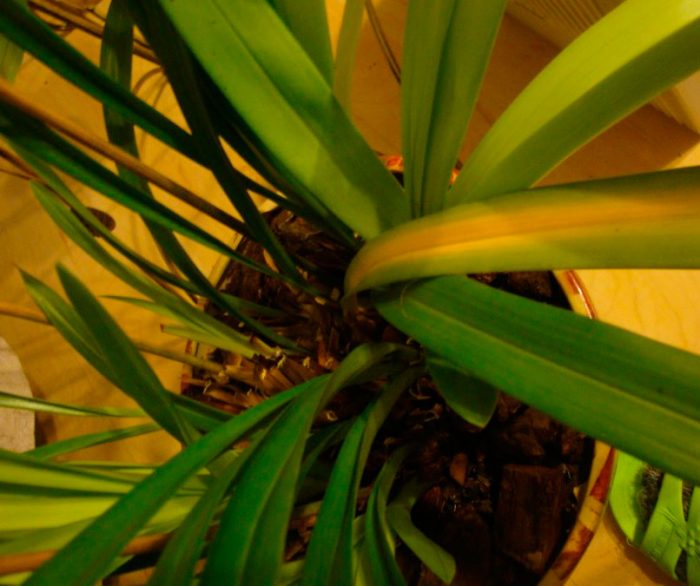
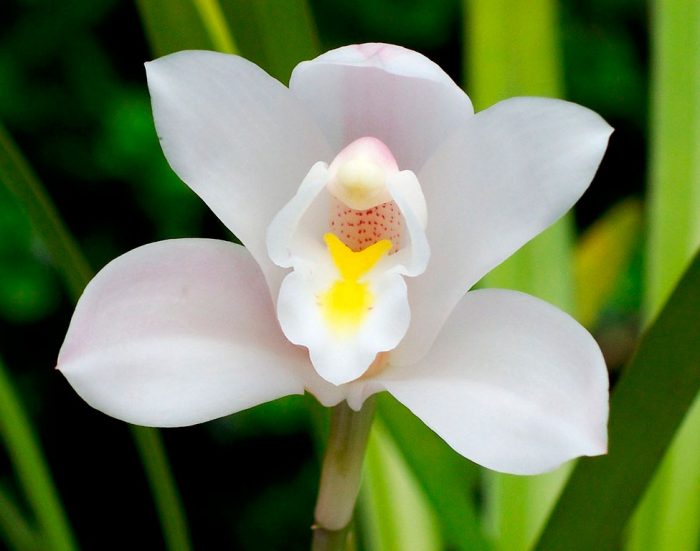


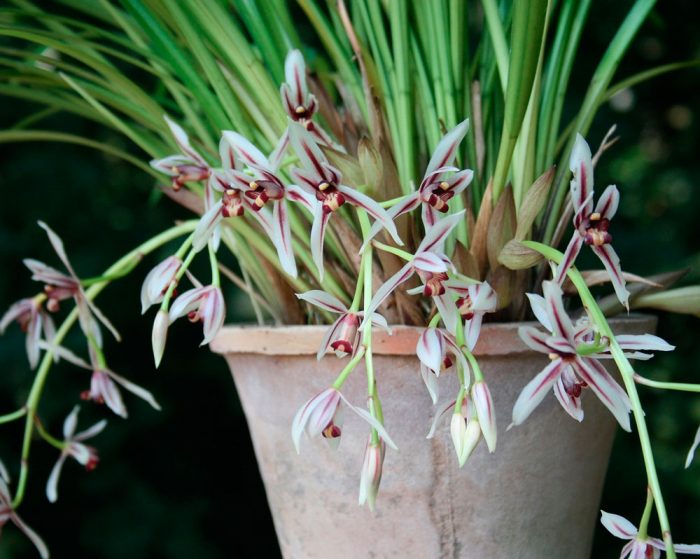
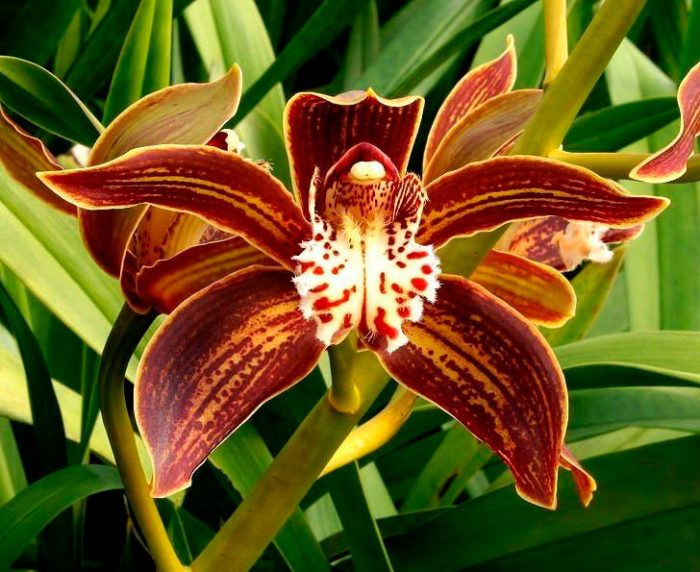
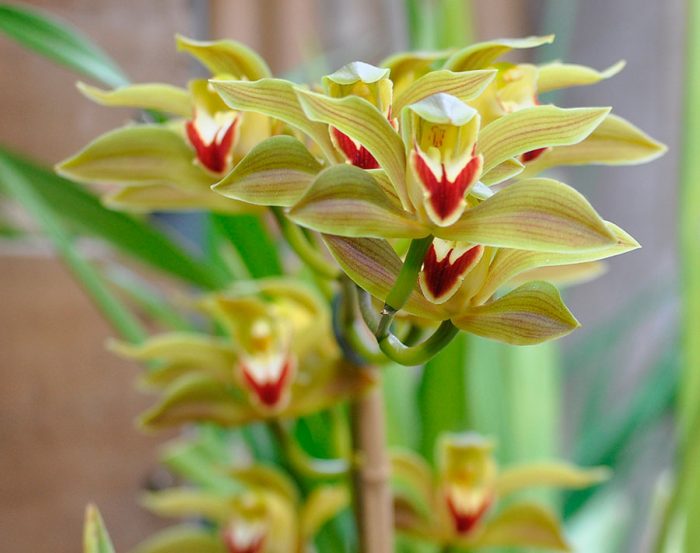
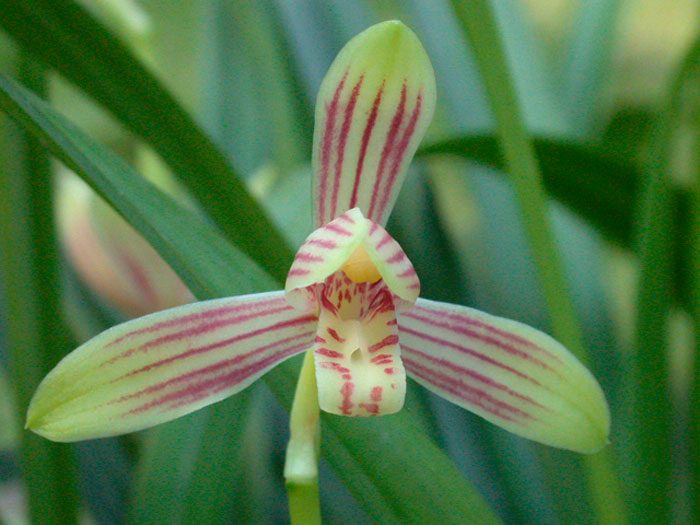
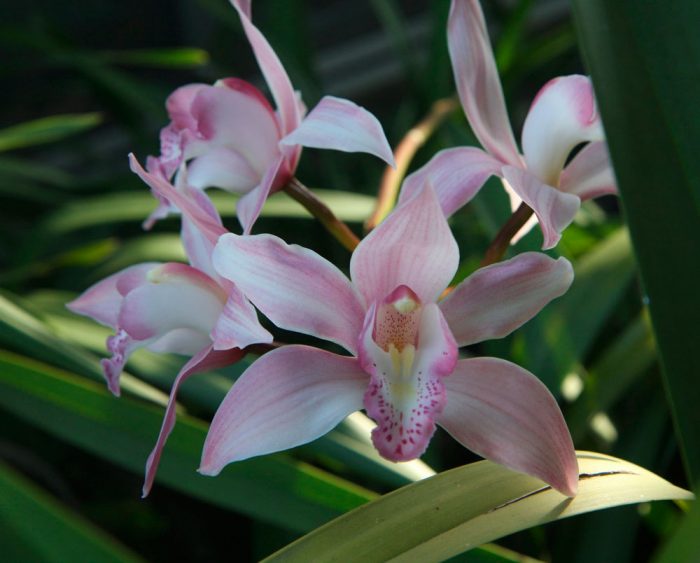
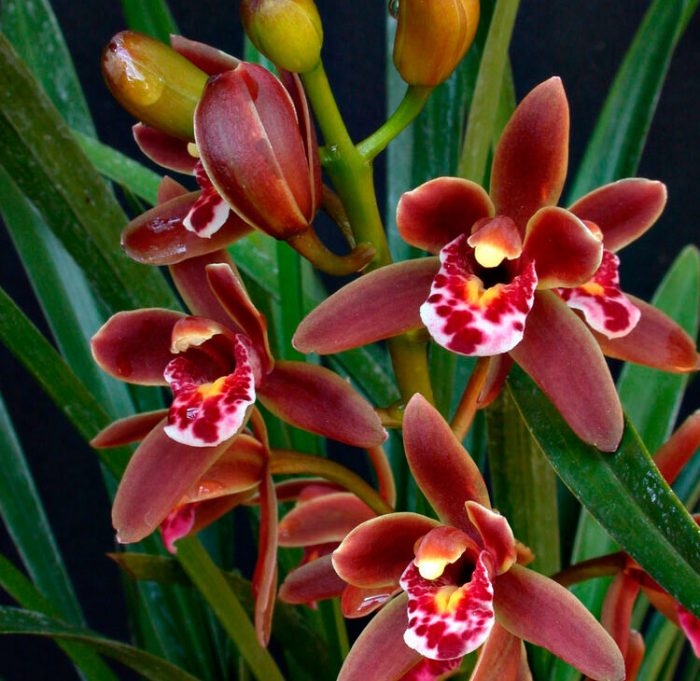
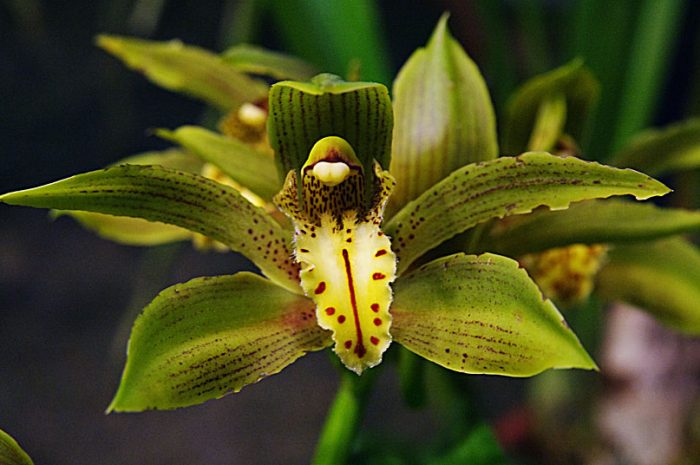




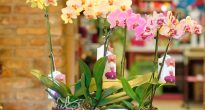
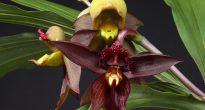
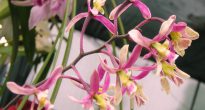
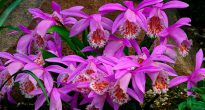
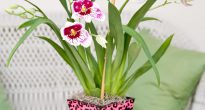

I bought a cymbidium in a flower shop, transplanted it into fresh soil, but for some reason the tips of the leaves crack and blacken. I do not know how and how to cure him.
My cymbidium leaves blackened tips, I'm tired of cutting them off.